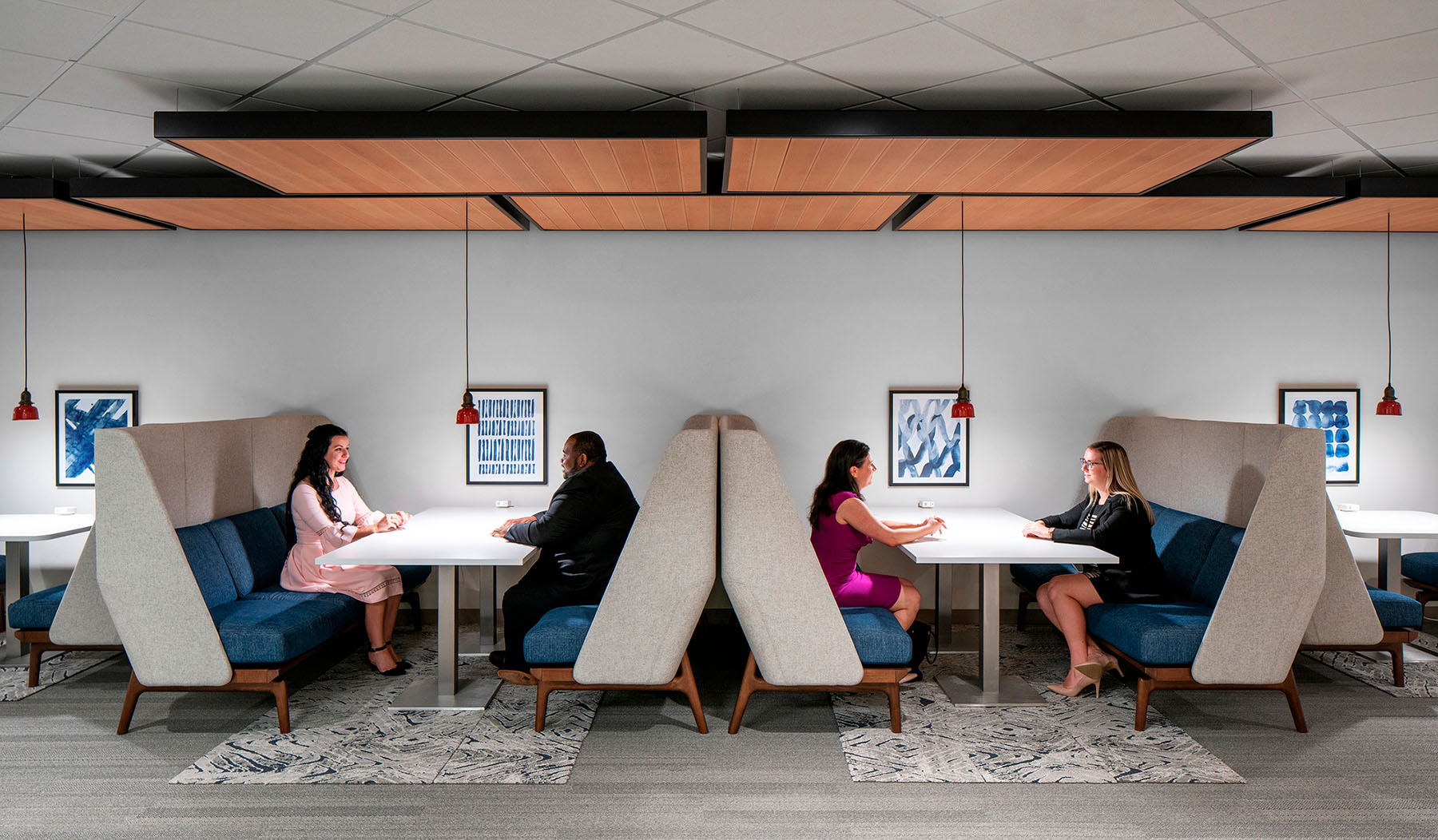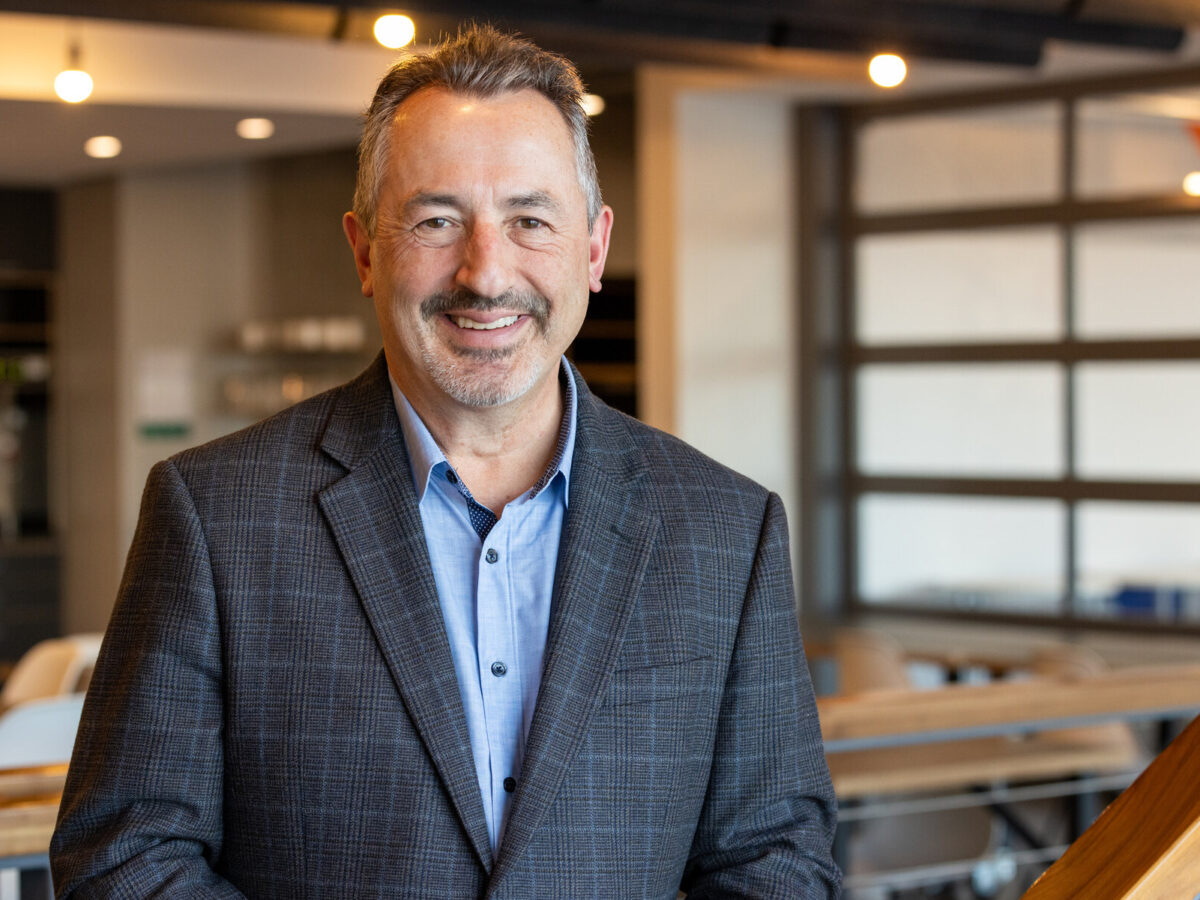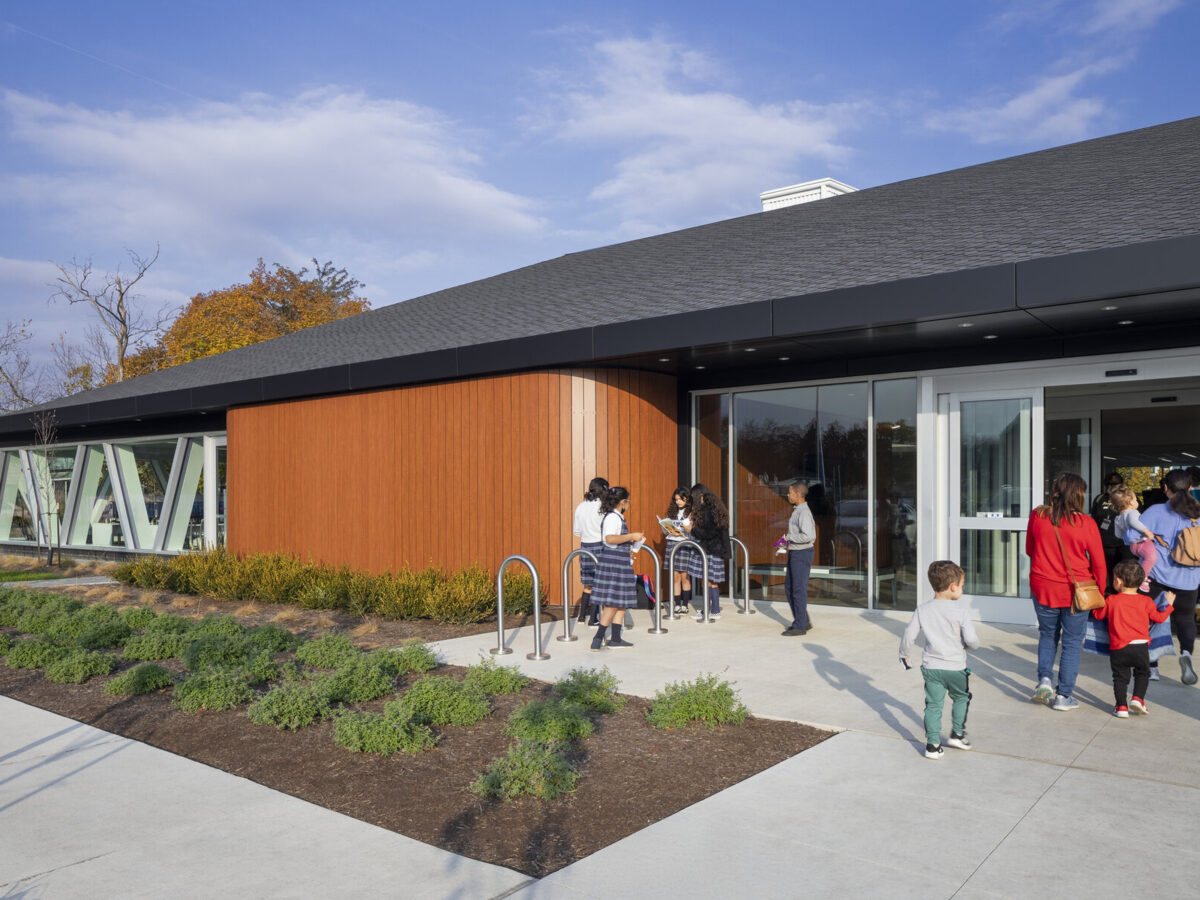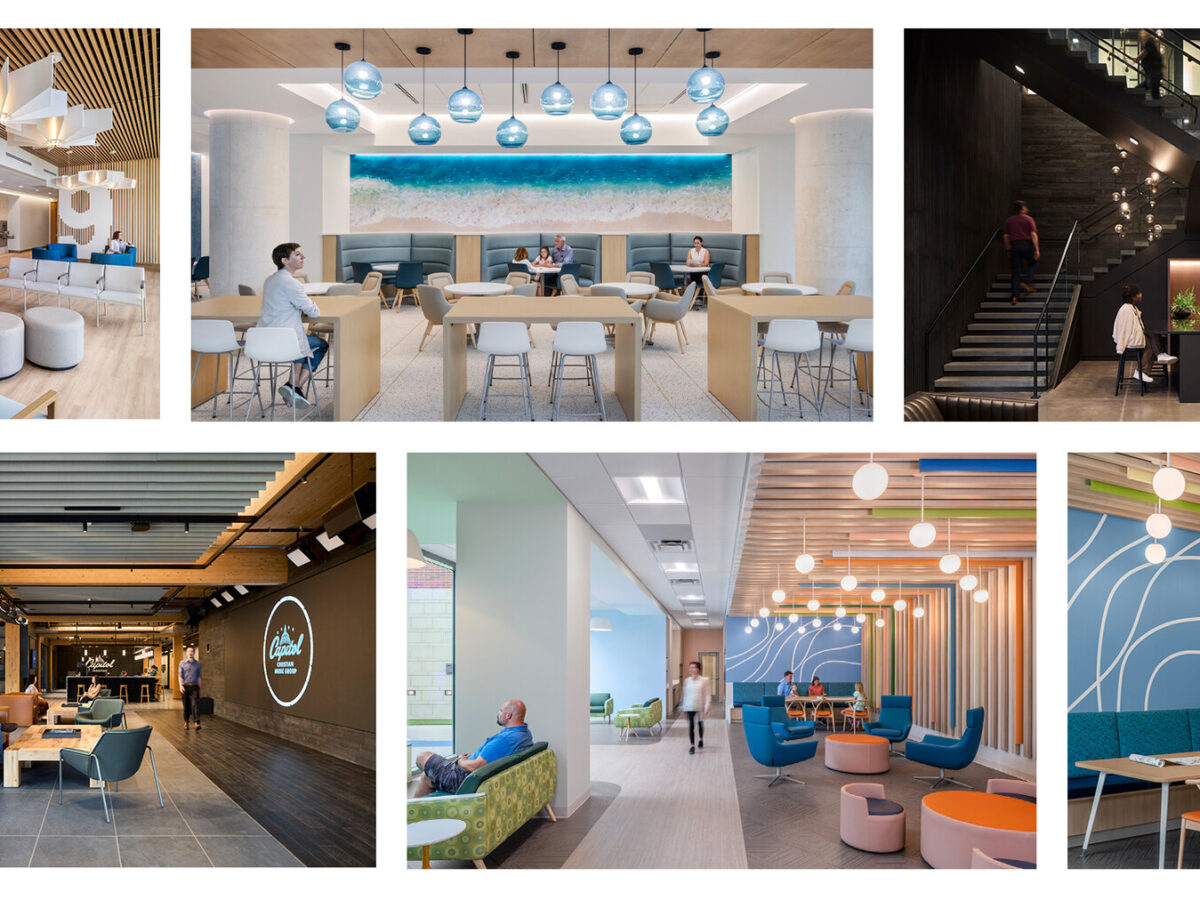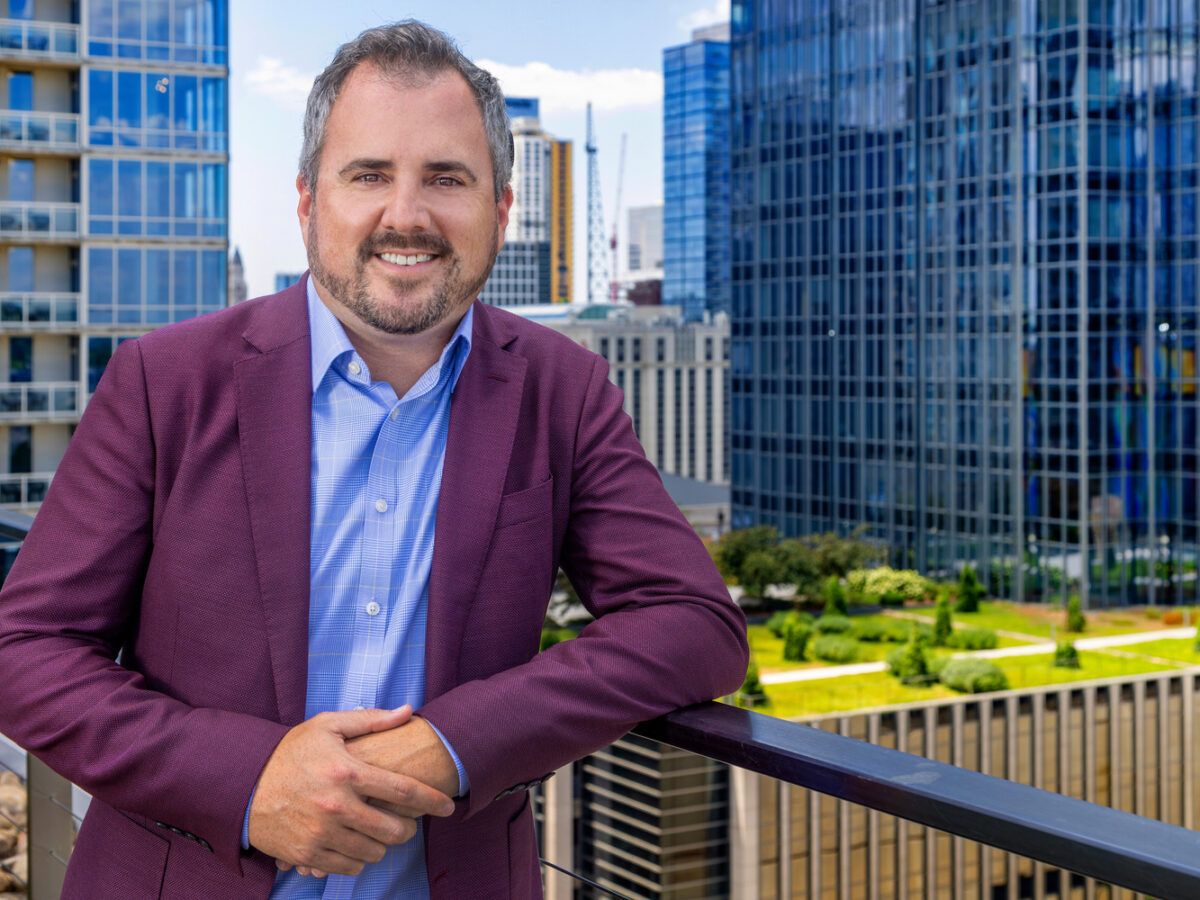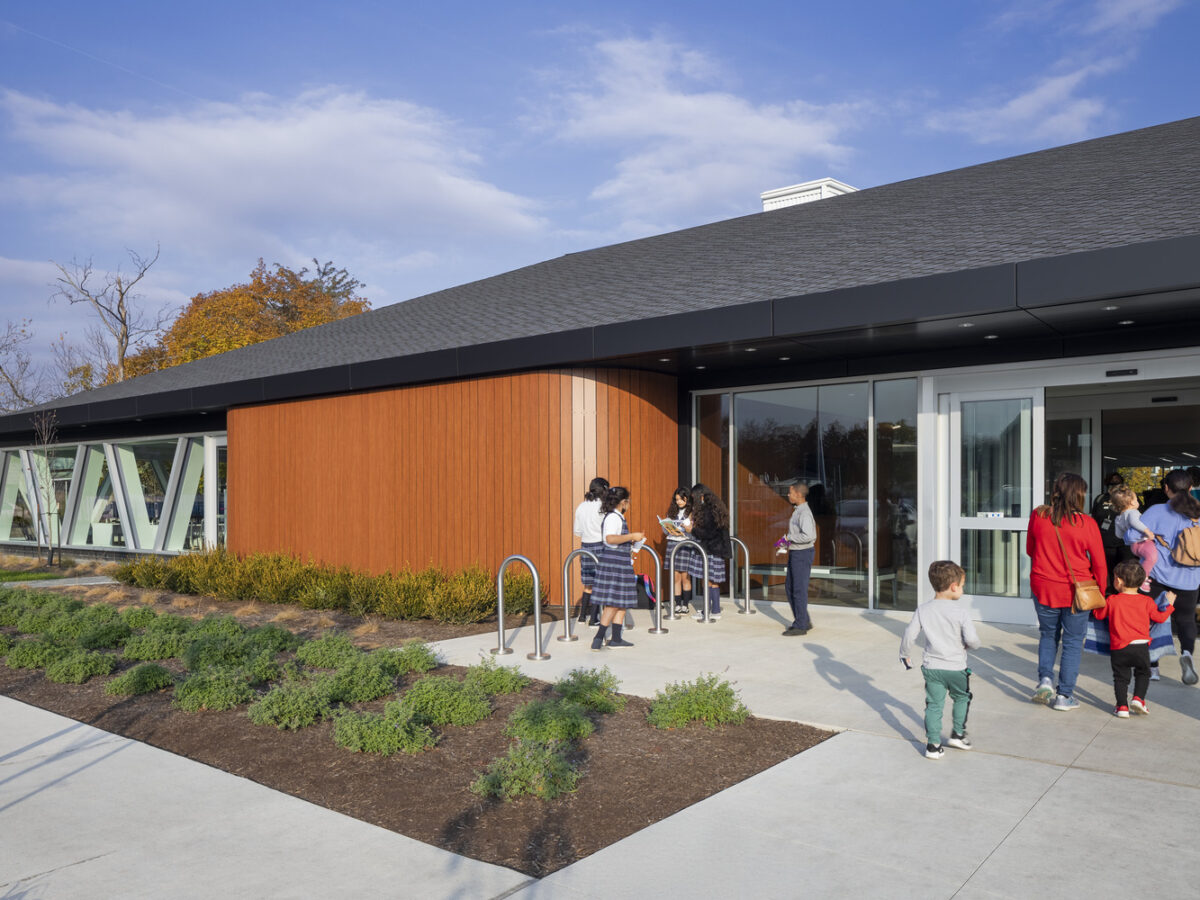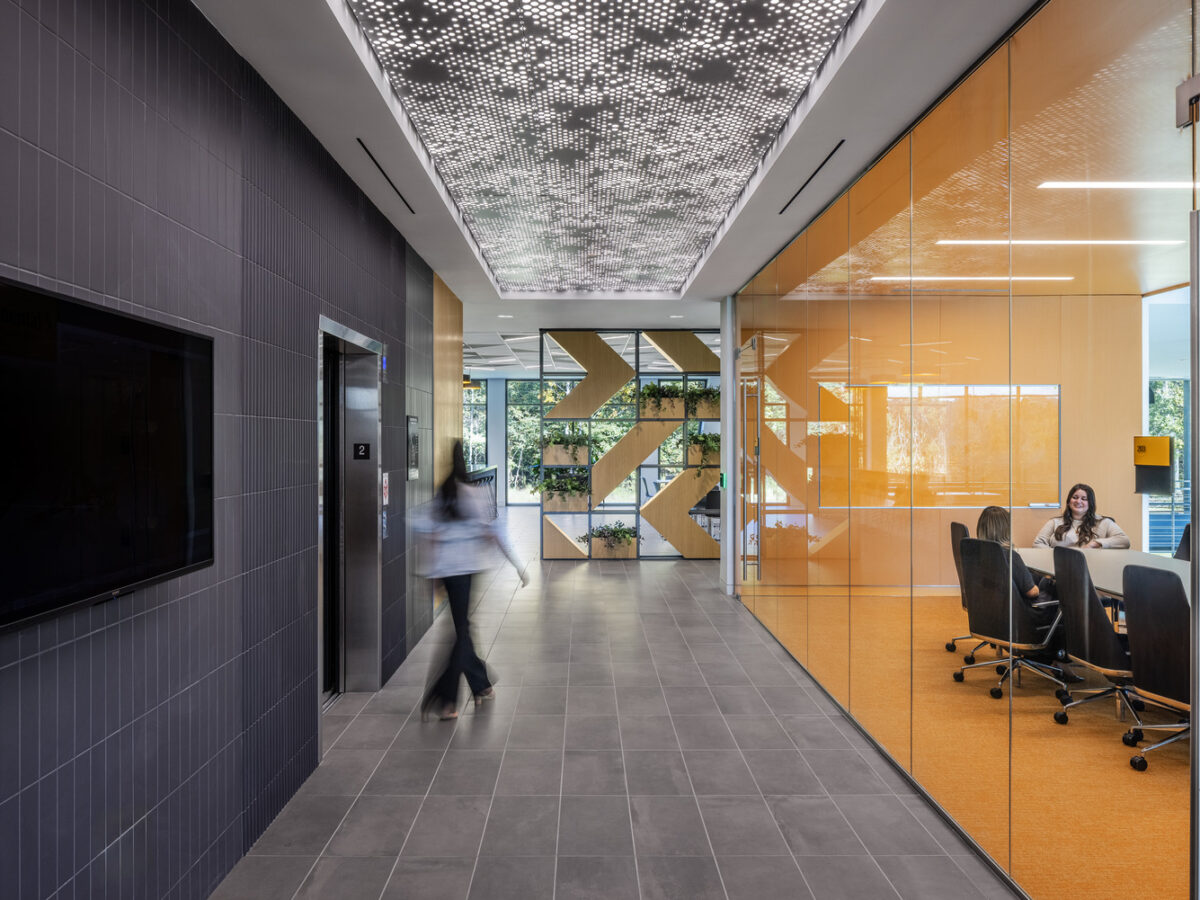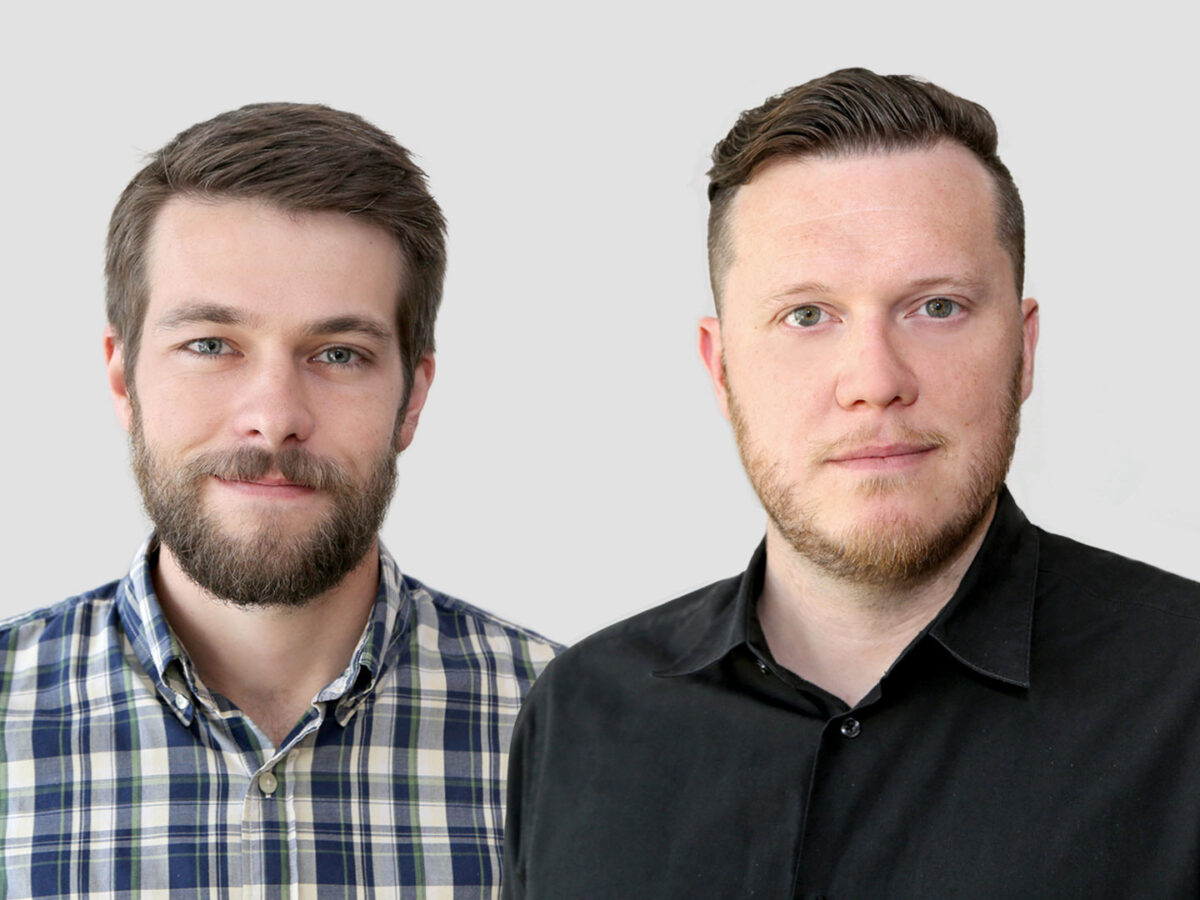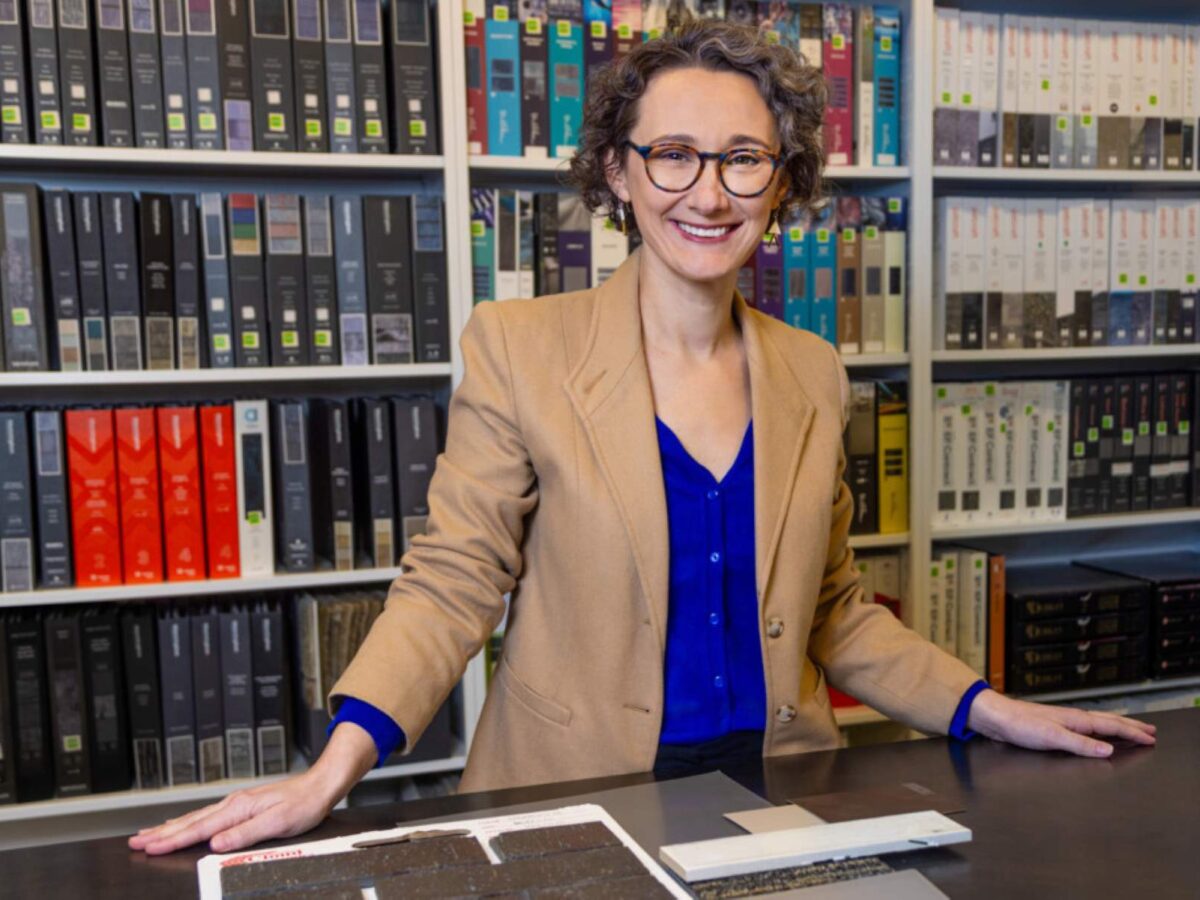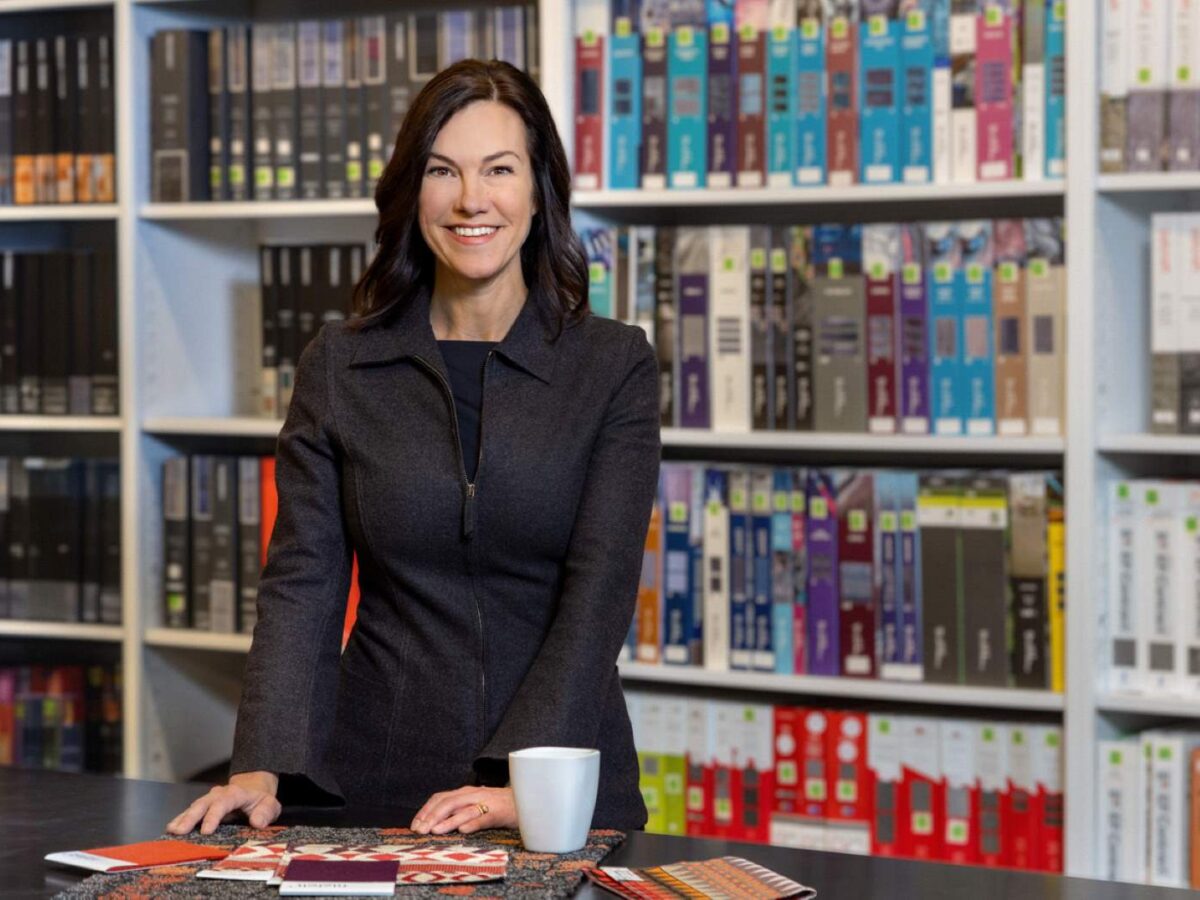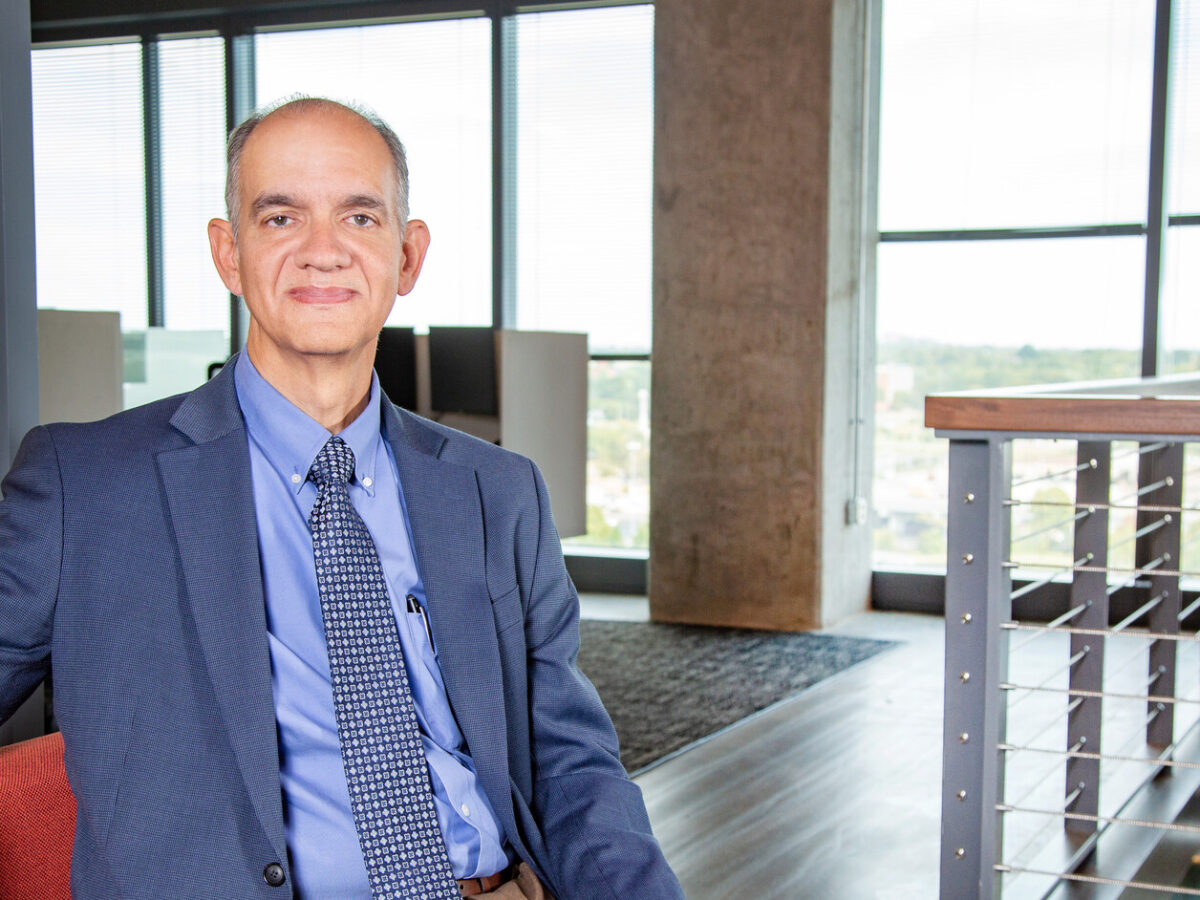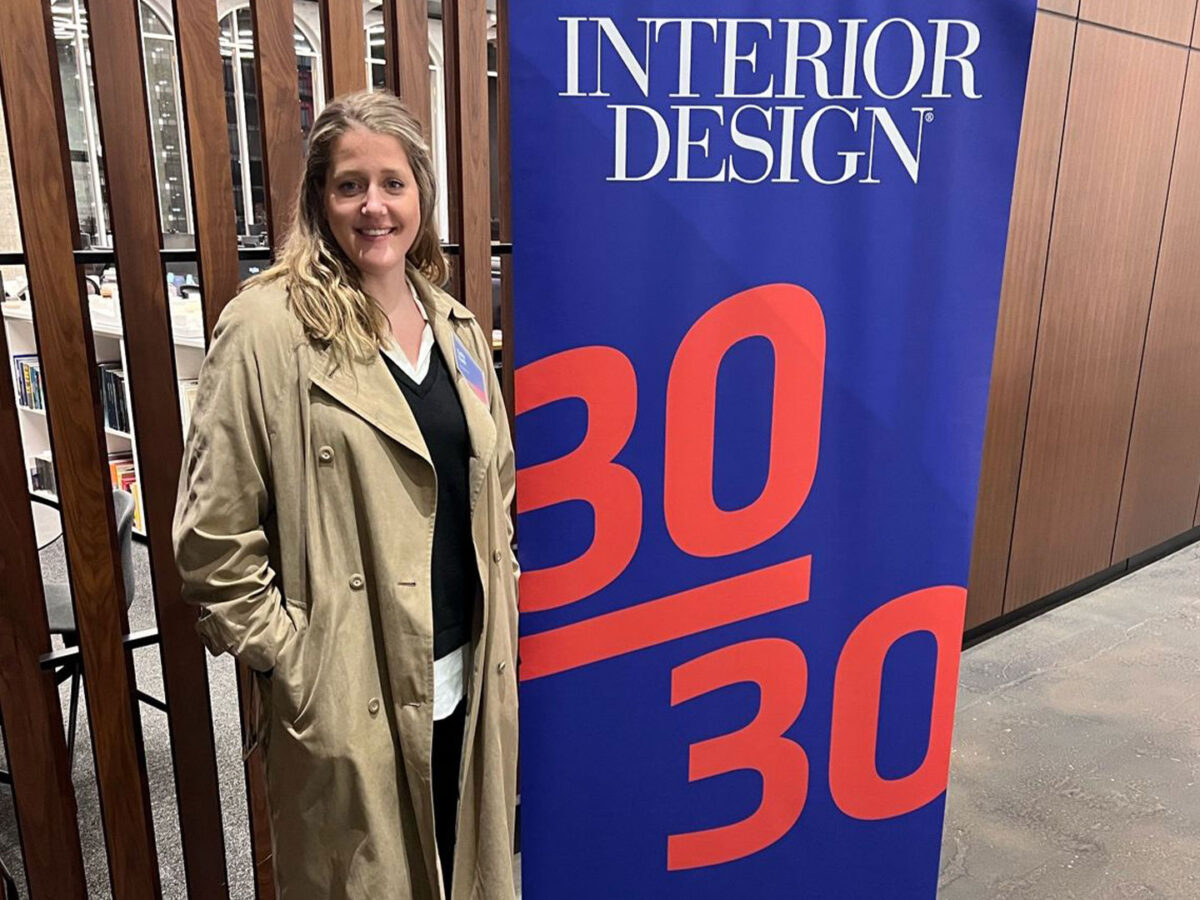When a leading global advisory, brokering and solutions company decided to reimagine their workplace to meet the changing needs of their business, they launched a design competition. The organization called on architects and designers to deliver an initial conceptual floor plan that created an inspiring new vision for the firm that would set the standard for their offices moving forward.
As our client had already adopted a hybrid work arrangement prior to COVID-19, they needed to take an even bigger leap in terms of elevating their workplace experience for employees. Our design team was proud to take top honors in the competition and is now working with the client to implement the plan into one of its key regional offices, taking their vision for their office of the future to the next level.
In this blog, we take a look at our winning design submission through the lens of the “great return to office” as companies look beyond the pandemic, and employees seek a different type of workplace experience—one that prioritizes collaboration, technology, company brand and a culture of connection, and draws inspiration from outside of the traditional workplace environment.

Promoting social capital, the flexible, hospitality-inspired workplace plan features branded destinations that foster connection and enhance the employee experience for everyone. The unique office-hub design shifts away from a full-time, desk-centric focus and orients itself around a central Town Center that connects each location.
A Spirited Attraction
At the heart of the plan is the idea that people are transitioning, or have already transitioned, into a hybrid work model. As they return to the workplace, there will also be a large percentage of employees who will continue to work remotely.
Recognizing the impact of the COVID-19 pandemic on the changing disposition of employees, which is to increase their workload away from the office, our challenge was to create a dynamic office hub that serves as a spirited attraction to draw people back to the workplace while reestablishing connections among colleagues—whether it’s between smaller, more intimate teams or across the entire firm—and connecting employees to the company’s brand and values.
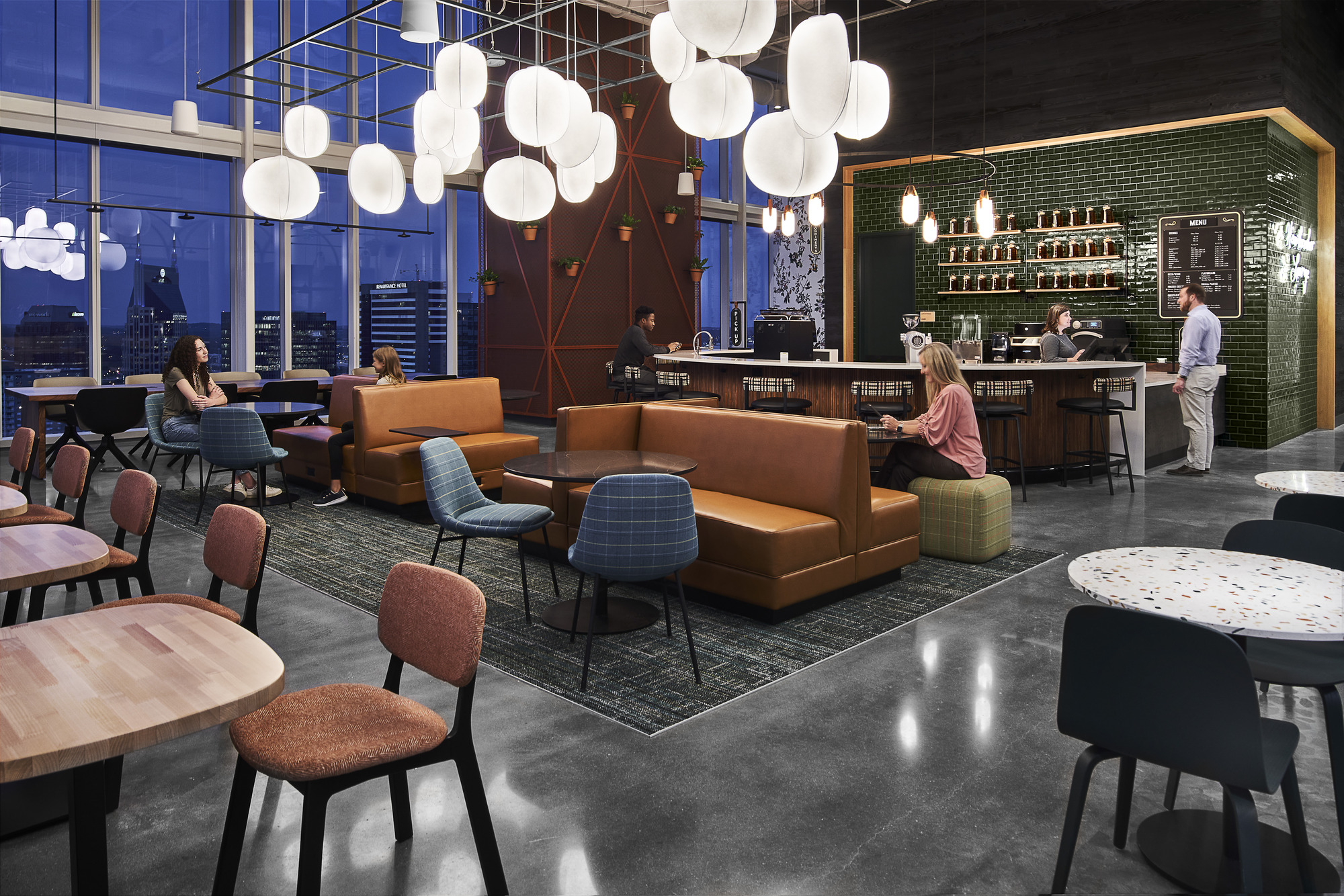
Infusing Hospitality, Supporting Connections
We started with a high-level design concept that identified a central Town Center as the heartbeat of the office; a centralized plaza space that supports both small team and community connections while also serving as a food and beverage access point.
More akin to a coffee shop or hotel lobby than your standard workplace break area, the Town Center’s hospitality-focused design features a Beverage Station and a Nourishment Center, both supported by a hospitality team, as well as a Tech Bar/Tech Concierge for on-site technical support.
Team-Centric Spaces
The north side of the plan features “The Clubhouse”—a series of interconnecting and reconfigurable spaces for immersive team interaction. Providing the fluidity to swiftly transition from individual work to team collaboration, The Clubhouse is located within the larger open-office space allowing groups of people, including hybrid workers, to come together and work on a project collectively.
Each team space within The Clubhouse includes unique furniture configurations while offering digital whiteboard capabilities that are visible to both in-person and remote audiences. All meeting and team spaces were designed for a more equitable experience for both face-to-face and virtual participants.
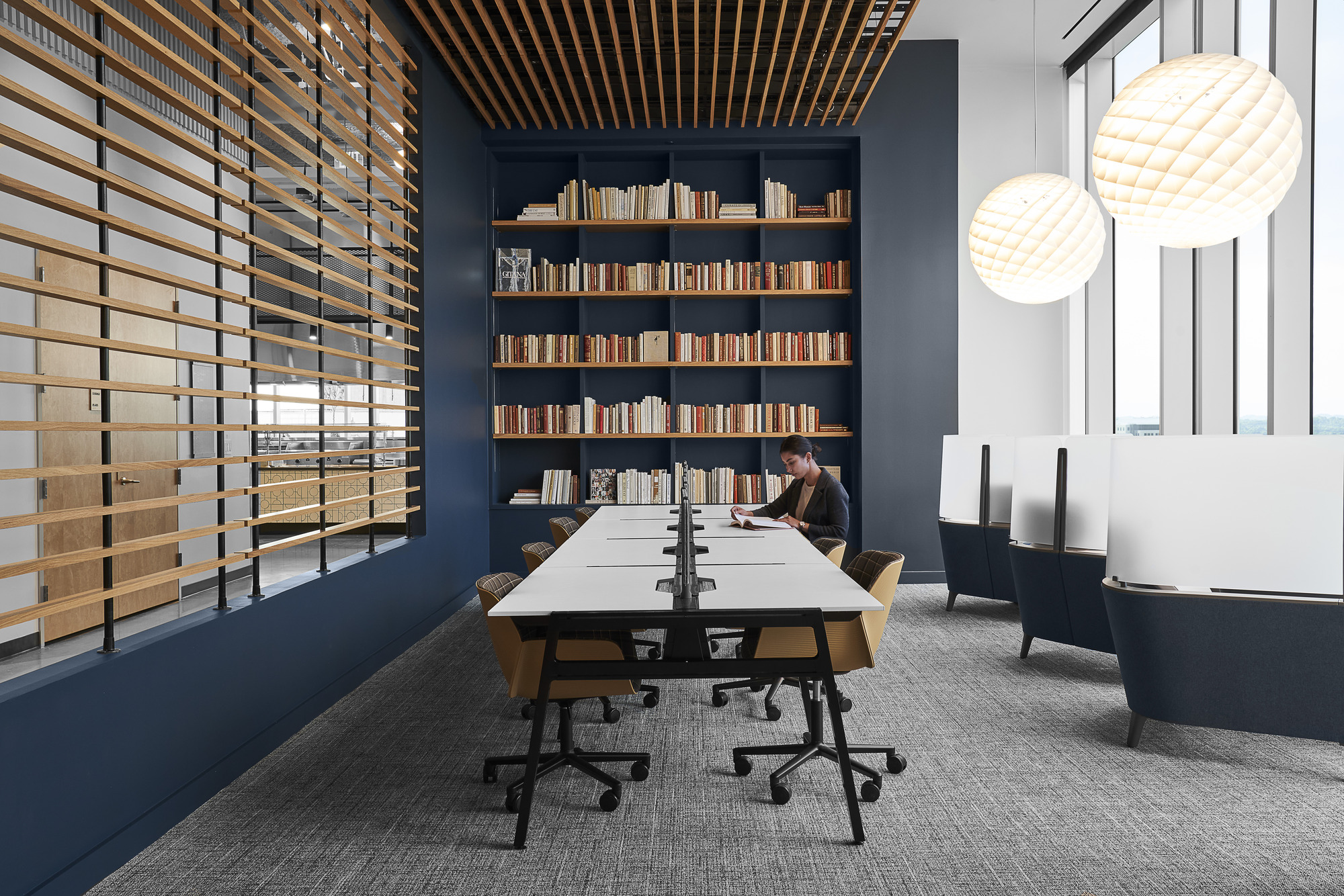
Choose Your Neighborhood!
Another component of the floor plan is uniquely designed workspaces or “neighborhoods,” capable of supporting individual, small, and large workgroups alike. Each neighborhood has a slightly different design with its own distinctive personality and ambiance, offering a greater variety of choices for work settings. For example, “The Veranda” neighborhood brings the outside in by opening the space to the outside through operable windows, while “The Study” neighborhood provides a lowkey, library-style atmosphere that serves as a quiet place to focus.
Providing a “buffer zone” between the centralized Town Center and the working areas, meeting rooms and focus rooms introduce a different variety of furniture in each of the enclosed spaces, adding to the range of unique work environments that employees can choose from.
An Inclusive Design
As our client’s No. 1 wish was for a workplace that fosters inclusivity, equity and diversity, our inclusive design fosters a culture that is inviting to all employees, accommodating their diverse needs through features such as a gender-neutral restroom and agile working spaces that reduce the number of desks needed, allowing more space to be given to inclusive areas such as a meditation room and a wellness room.
Designed to support neurodiverse and neurotypical populations, the workplace also features a variety of ergonomics, tones, patterns, lighting levels and stimuli that provide safe and inclusive accommodations that promote the health and well-being of each employee.
Smart technology and AV infrastructures further enhance both the physical and digital environment of the spaces, supporting employees’ ability to connect with one another, their clients, and their work.
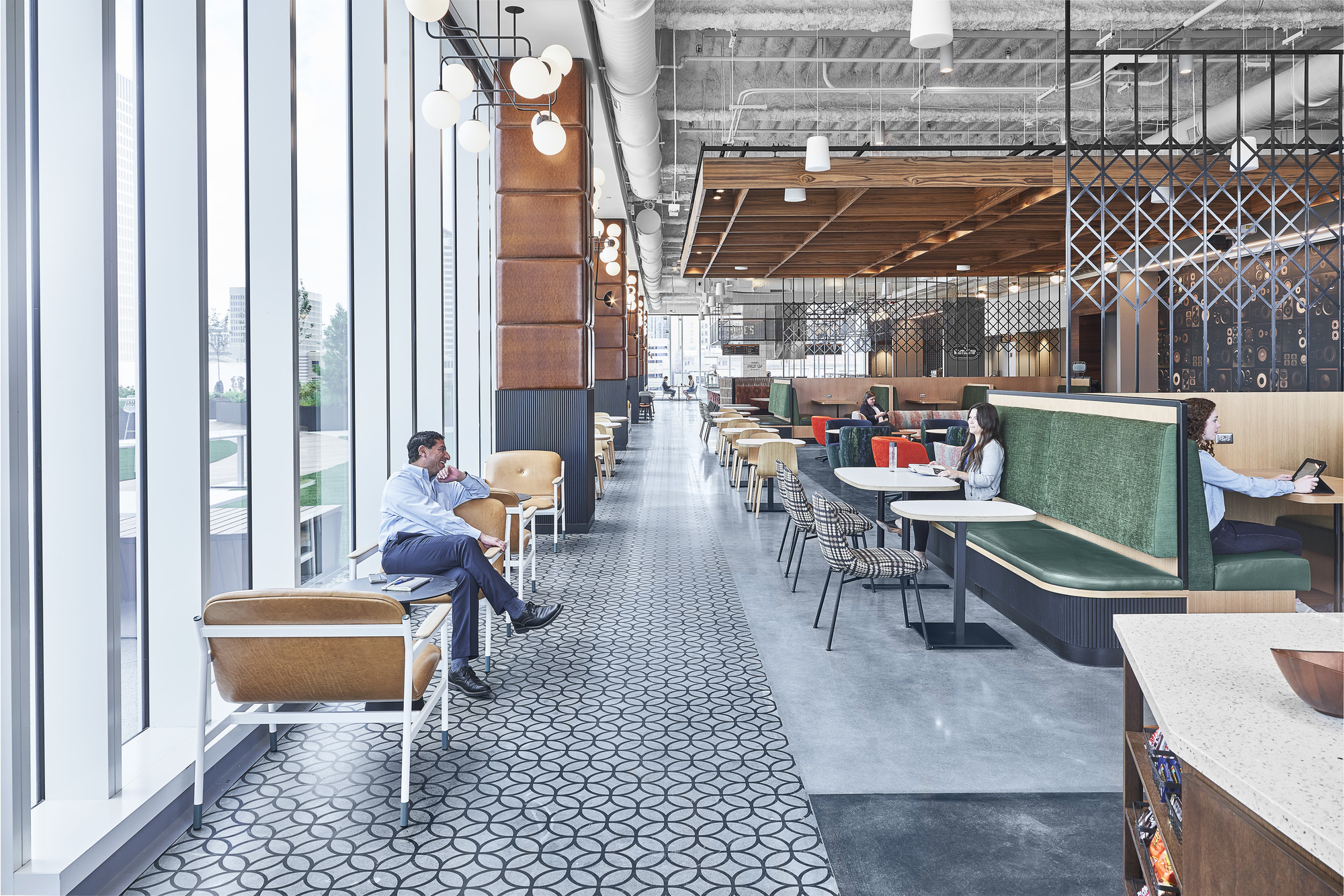
It Has To Be Worth It
Arguably, the traditional workplace has been forever altered by the pandemic. It seems inevitable that static, inflexible workspaces surrounded by white walls, white paint and white ceiling tile will someday soon be a thing of the past—a footnote to a pre-pandemic world.
Employees are clearly seeking a whole new level of service in the workplace. More proactive than reactive, the post-pandemic workplace suggests a more choreographed, hospitality-centric experience for employees who give up the comforts and convenience of working from home to return to the physical workplace.
Perhaps the million-dollar question is: What can the office provide that home can’t? In a nutshell, a connection to people, company culture and brand, and an inspiring, energized workplace environment replete with choices.
To incentivize employees to return to the office, we have to look far beyond the basics. It’s no longer enough to provide a break room space with coffee makers and your choice of bold, regular or decaf. If people like to go to a coffee house or a restaurant during their lunch break, then bring the coffee-house/restaurant experience into the workplace—servers and all. Provide a hospitality/concierge team that is dedicated to the entire group and understands their needs.
And this extends beyond food and beverage and into technology, which has a huge impact on the way people work. Now more than ever, employees need to set up for work quickly. So, have that “Genius” Bar/Tech Concierge on-site and at the ready for on-the-spot tech support.
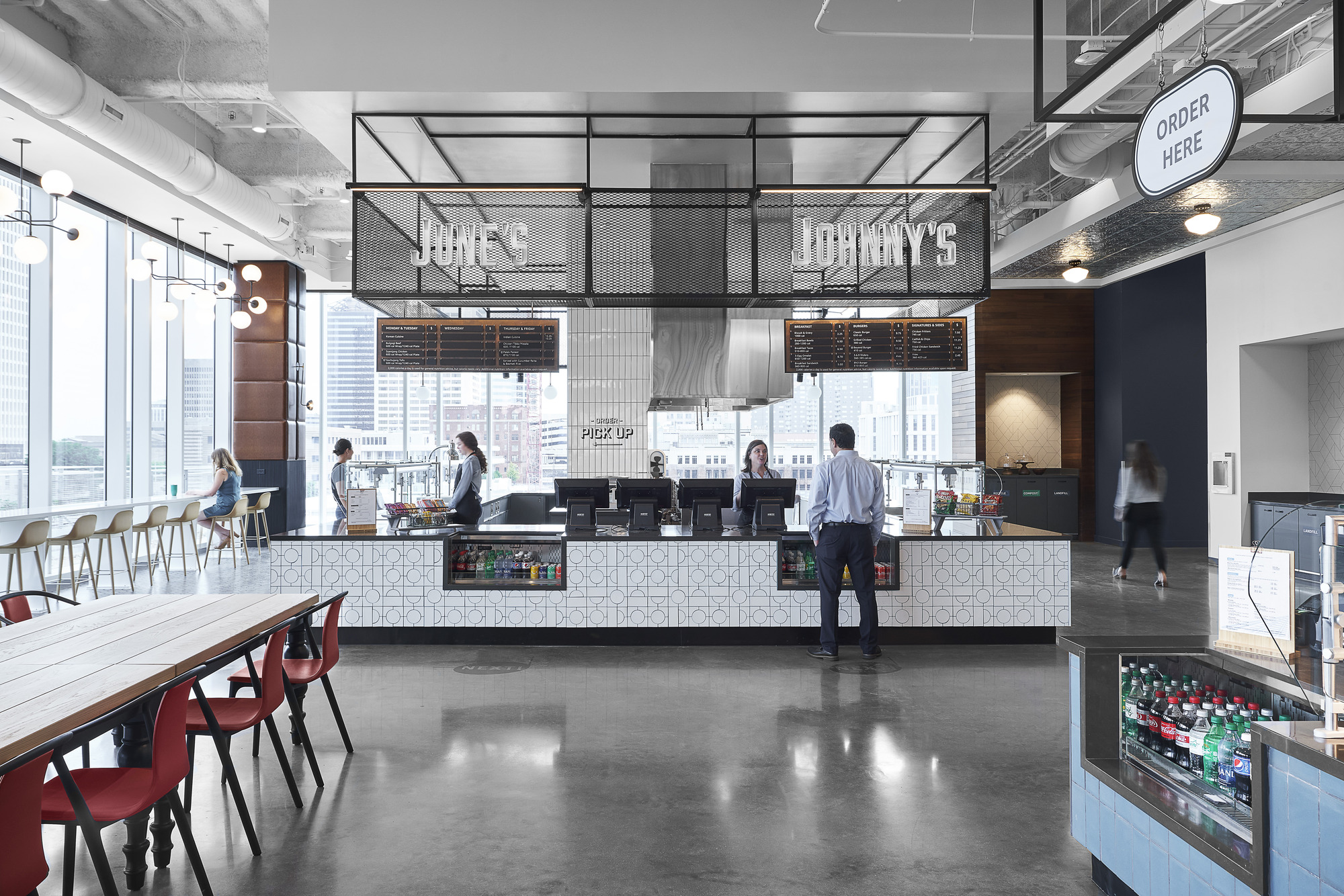
Ultimately, the post-pandemic workplace represents a huge culture shift. However, the entire weight of driving culture cannot be placed on the physical office alone because it’s people who drive the culture. It’s not just about companies building a fancy new office for employees because they want them to be happy; although that’s certainly a part of the equation. It’s also about the meaning behind the office and what makes a company who they are and do what they do.
What truly sets a workplace apart is a culture that connects employees to the people they work with while fostering a connection to the firm they work for. To make an office a great place to work, companies need to provide dynamic, adaptable and hospitality-centric spaces that support this vital connection—a connection that will keep employees coming back simply because it’s worth it.
